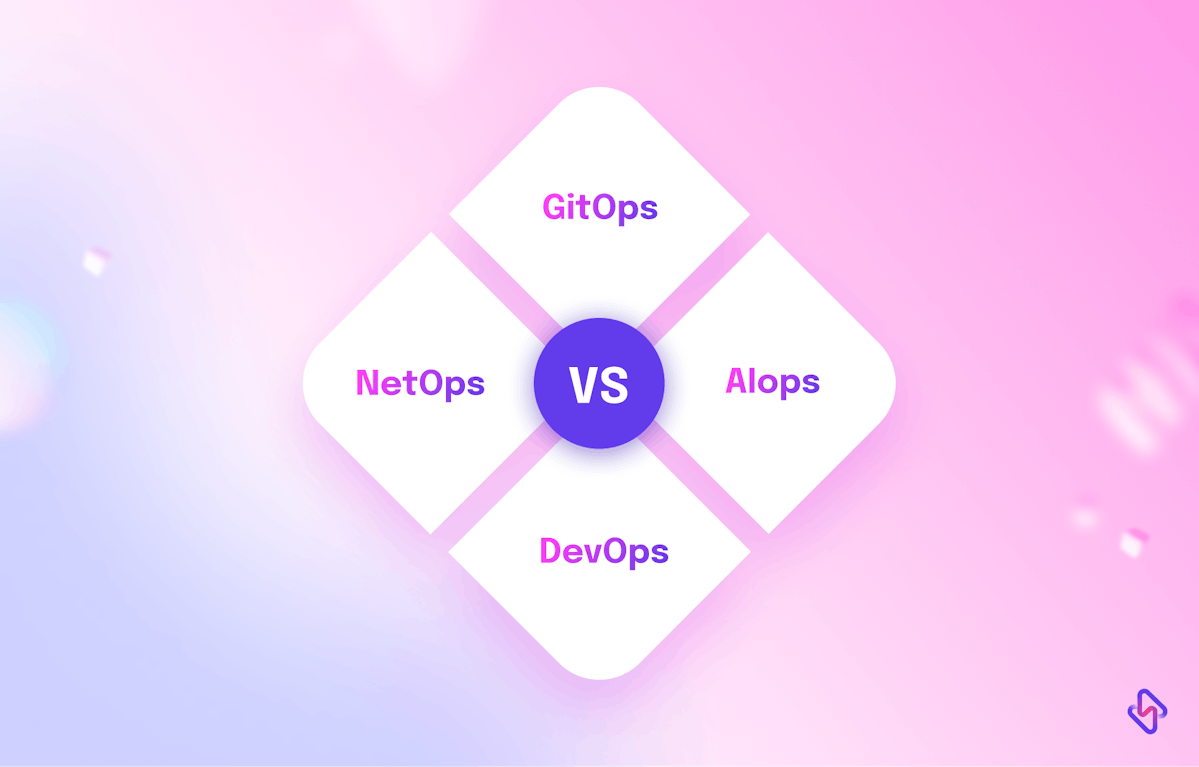When a senior application developer transitions into an engineering manager role, seldom does s/he get welcomed with garlands. Mostly, it would be meetings where they open a can of worms i.e., tech buzzwords. And in the past few years, the focal point of all such meetings is that “IT operations are everyone’s job”.
It sounds music to ears as involving everyone and shared responsibilities can do magic. Though new practices and frameworks are evolving to help companies implement this, and unlock their full potential, it’s not easy to execute them in reality without making a hotch-potch. The mess happens mainly due to a lack of clarity about the organizational goals, and FOMO amidst all the noise around the next transformational technology/framework.
And that’s what inspired us to write a series of insights for engineering managers, to help them make better and informed decisions. For example, earlier we had discussed how DevOps is about cultivating a culture of iterative & continuous software development using CI/CD pipelines, and automation tools. In another insight, we also briefly explained how GitOps extends the benefits of agile principles to infrastructure orchestration and management teams.
In fact, if you read those insights, you would know that GitOps and DevOps share multiple overlapping principles & practices.
But do we have just two peas in the pod? Nope. Instead, too many.
We’ve AIOps, NetOps, secOps, DevSecOps, SysOps, AgileOps, CloudOps, FinOps, and whatnot. Are these all worth your attention? Are they actually useful for organizations aspiring to be more agile and adaptable?
Maybe. Maybe not.
These could be useful if executed with precision. But the explosion of buzzwords confuses managers and frustrates them. Read this insight to understand the prominent terminologies, and how DevOps, GitOps, AIOps, NetOps differ exactly, and what should be on your plate/tech radar.
DevOps vs GitOps vs AIOps vs NetOps
In general, the terms, with ‘Ops’ as the tail, are more or less about removing bottlenecks and improving outcomes by automating operational processes. In short, they are all aimed at unlocking higher productivity, improving efficiency, fostering collaboration, and enhancing transparency.
But depending on your organization’s IT maturity levels, the level of sophisticated technologies that your IT systems need may vary. Let’s understand this with DevOps vs GitOps vs AIOps comparison. These three have more in common with each other than NetOps, which we discuss toward the end.
DevOps: Streamline SDLC stages
Traditional software development was siloed. DevOps makes it more flexible and streamlines the SDLC lifecycle stages. It sprouts a culture where the application development and operations teams effectively collaborate together and employ automation & monitoring tools to implement CI/CD pipelines. The success of DevOps is dependent on how well the team shares responsibilities, and the efficacy of the quick feedback loops. Continuous testing and nested security are integral parts of the CI/CD pipelines. These improve the reliability of the products deployed to the production environment.
But DevOps alone was not enough. Engineering teams could still be limited by the performance, speed, and challenges of provisioning and managing infrastructure. That’s where GitOps spelled its magic/abracadabra.
GitOps: Simplify Infrastructure Management
As defined in our insight on GitOps,
“GitOps is the umbrella term given to the set of processes, practices, and techniques that codify and automate infrastructure designing, development, and management with declarative code that is version-controlled using Git.”
So, that means, GitOps makes infrastructure orchestration and management as simple as declaring a few lines of declarative code that defines the infrastructure & its environment configuration. Read our insight to find out how GitOps works.
Also, the move to the cloud has pushed networking teams, a critical part of any IT company, to culturally shift from a manual, procedural book-led approach to automated and code-governed networking operations management, aka NetOps.
NetOps: Make Networking Infrastructure Agile
For your context, IT networking operations involve dealing with software (network protocols, IP addresses, encryption etcetera) & hardware components (routers, switches, load balancers, network adapters, DNS, etcetera) that facilitate communication and data transfer between devices in a network.
Traditionally, this was done manually, thus introducing limitations for the software teams. It negatively influenced the value delivery and velocity metrics engineering KPIs. In fact, application development teams used to see networking as the roadblock to their agility. That’s where teams felt the need for NetOps (networking virtualization, automation, and orchestration).
NetOps encompasses networking hardware and software orchestration and automation tools, analytics, and data for predictive, proactive, and secure networking infrastructure management. There are multiple NetOps tools to accomplish the same. For example, Ansible, Chef, Puppet, Envoy, Istio, Resolve, AppViewX, etcetera. All these enable you to manage your networking infrastructure from a single point.
Though cloud service providers like AWS, Azure, and GCP don’t require you to get to the hardware levels for networking configuration, you would still need to configure programmatically how your application makes use of available networking capabilities, manage IPs, and create virtual networks. As optimized networking components are crucial for overall agility, security, resilience, performance, and resource utilization.
By the way, the last buzzword that we discuss here today, helps you not just make optimal use of networking resources, but your entire IT ecosystem (say ‘Hi’ to AIOps).
AIOps: Optimize Your IT Infrastructure
AIOps, as defined by Gartner is about streamlining and automating operational workflows using artificial intelligence. It collects and utilizes big data streaming from multiple IT infrastructure components (user applications, performance monitoring tools, and service ticketing systems). And then, these AIOps tools squeeze proactive insights from the data by performing multidimensional analysis. AIOps tools leverage sophisticated predictive algorithms to identify patterns in the data that could be taken as a signal for certain IT issues. Next, as the tools are designed to resolve non-critical issues without human intervention, they can initiate an automatic response to rectify the issues and ensure application & infrastructure availability. Else, it may also alert relevant departments and executives seeking human intervention for critical situations that the algorithm is yet not capable of addressing on its own.
In simpler words, your AIOps tools intelligently identify defects and anomalies in the observability data and act to enhance your IT operations i.e., monitoring, automation, service desk, and other functions.
Mastering Ops for Agile Success
To summarize the DevOps vs. GitOps vs. NetOps vs. AIOps discussion, these methodologies serve distinct purposes. And these can be implemented at your organization depending on your IT maturity levels.
Here’s a bite-sized summary of the insight.







